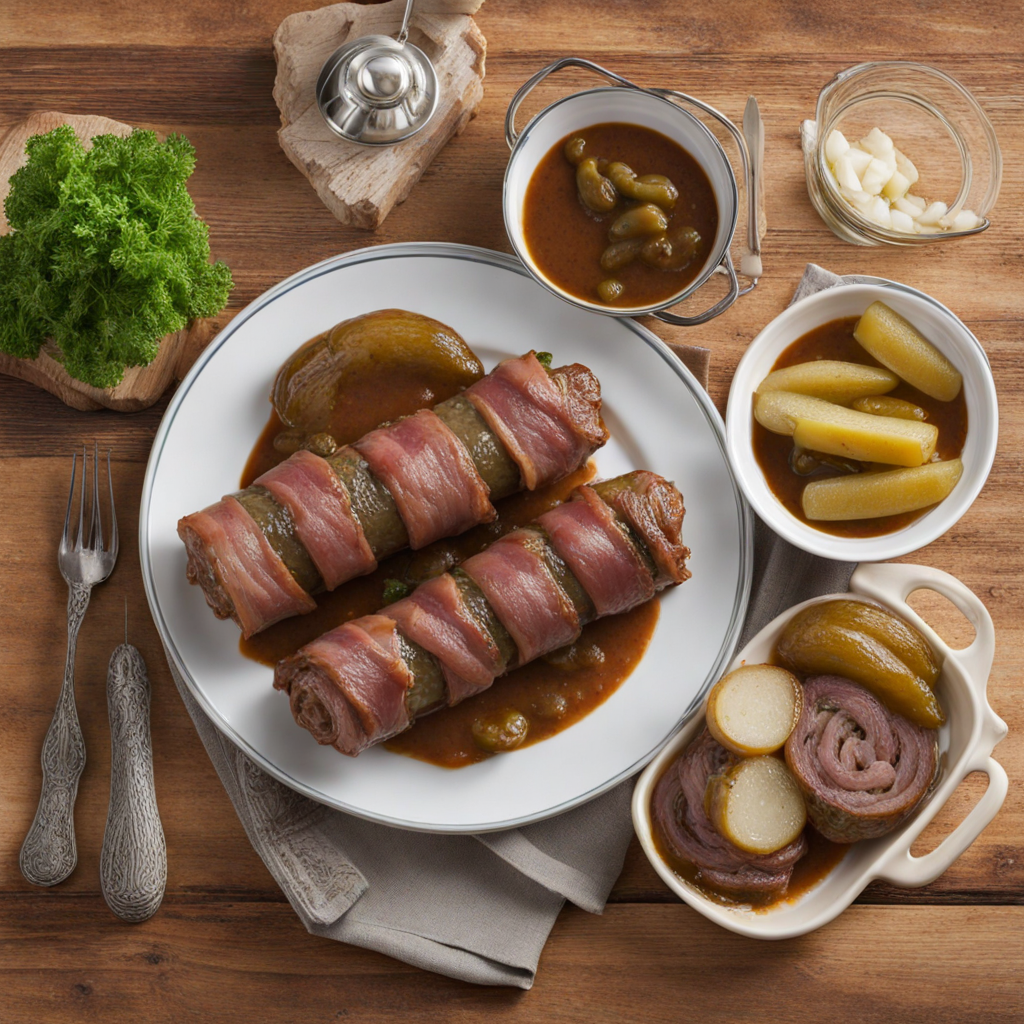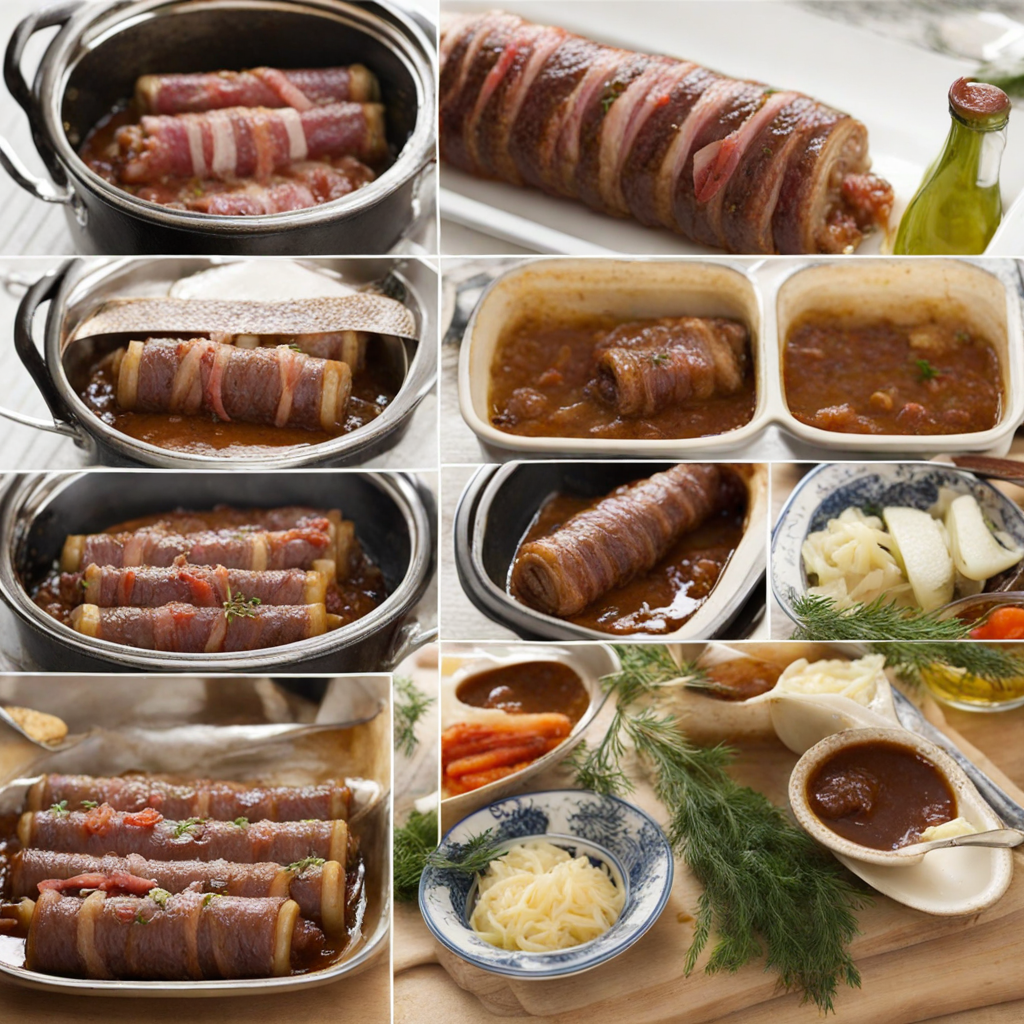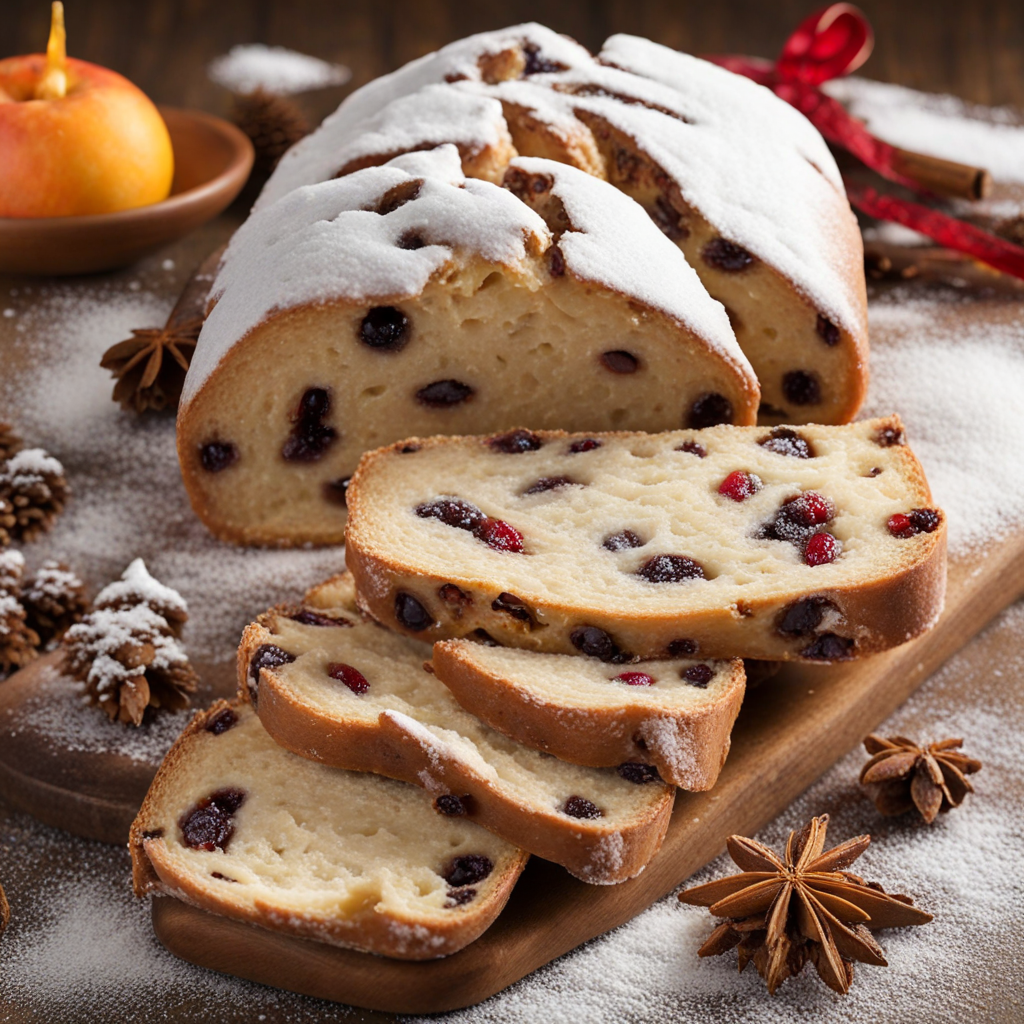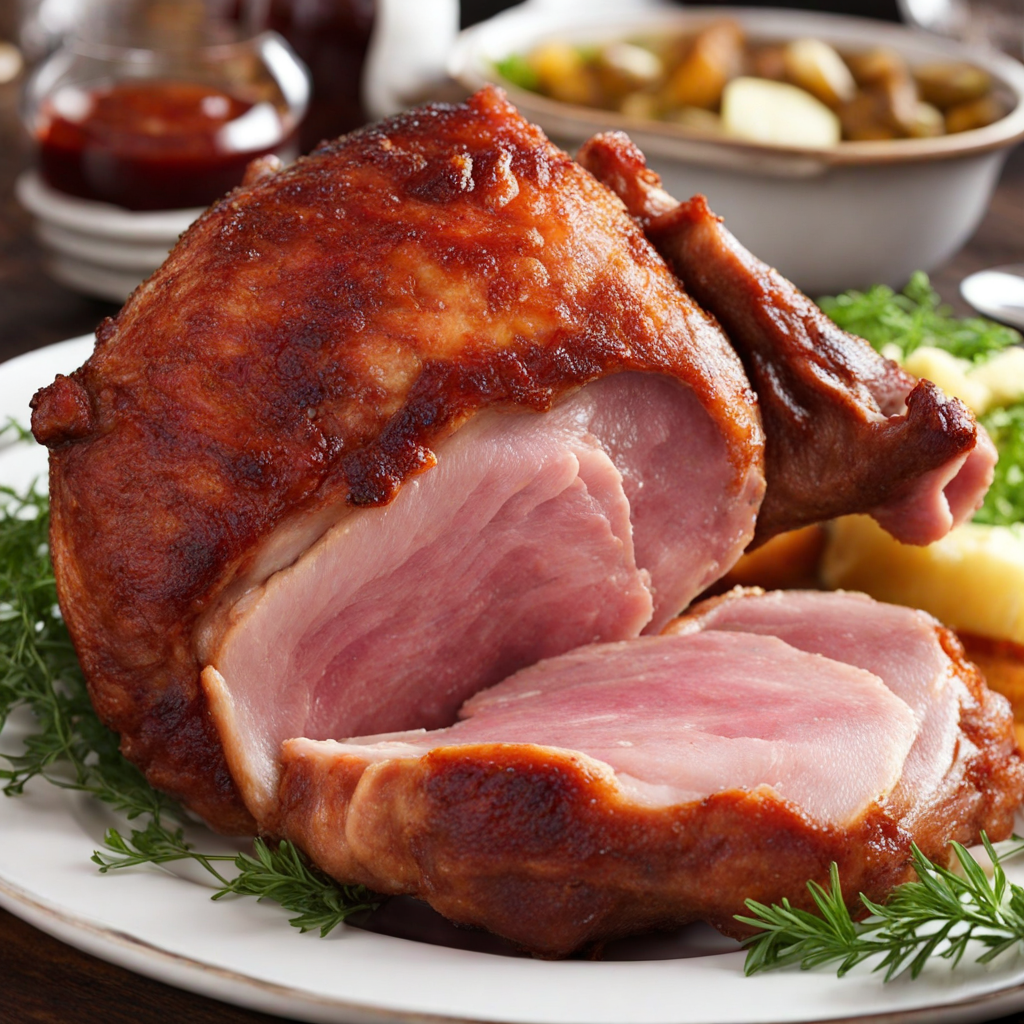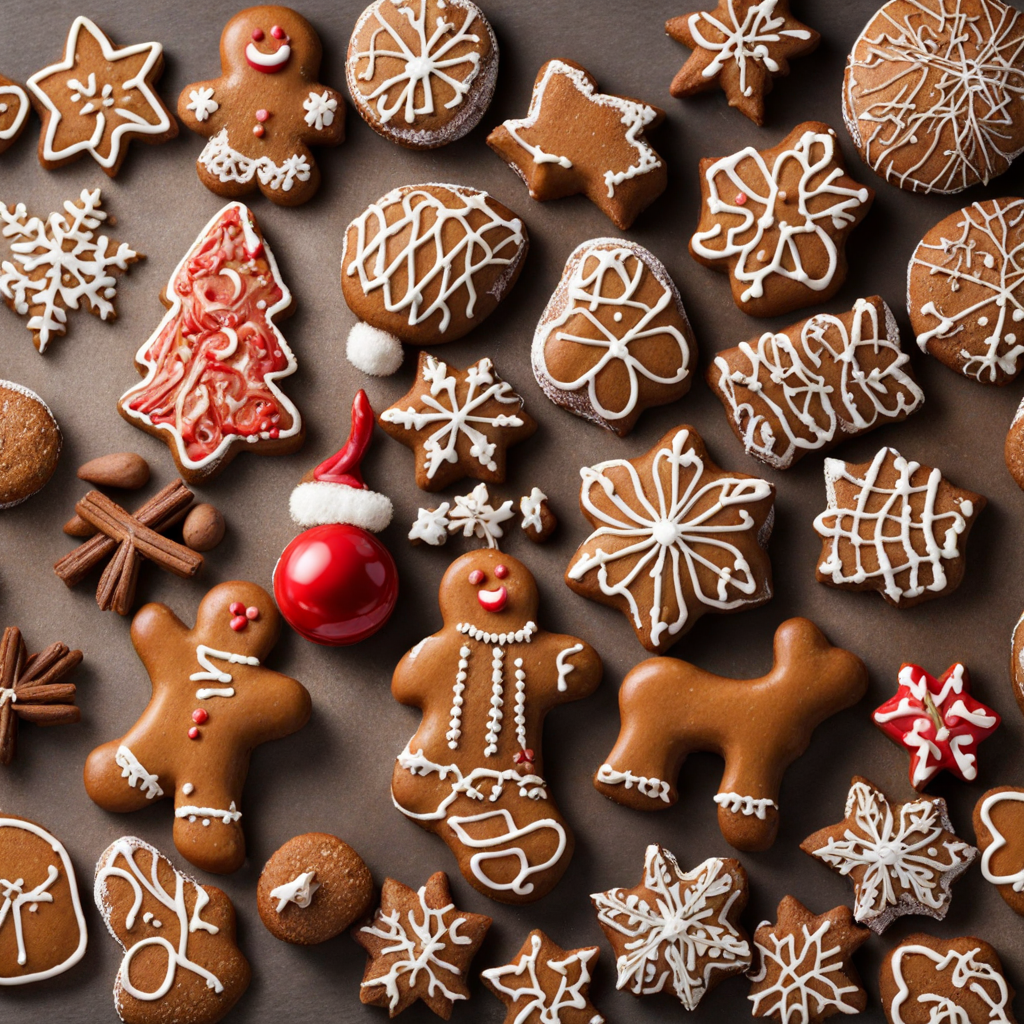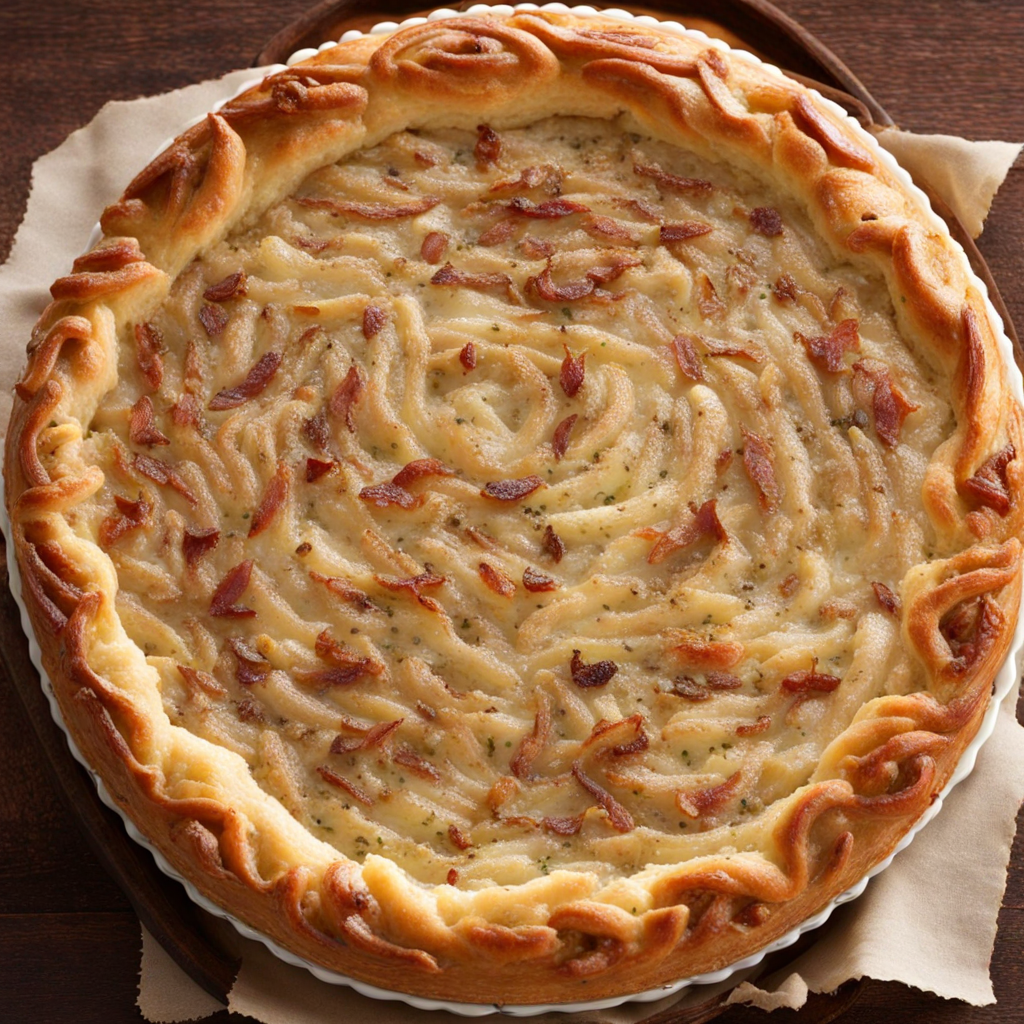Rouladen
Rouladen is a traditional German dish that embodies the heartiness and comfort of home-cooked meals. This savory delight features thinly sliced beef, typically from the flank or round, which is generously spread with a mixture of mustard, salt, and pepper. The beef is then layered with crispy bacon, onions, and pickles, rolled tightly, and secured with kitchen twine or toothpicks. The result is a flavorful bundle that, when cooked, becomes tender and infused with the rich tastes of its fillings. Cooking Rouladen is an art that involves browning the rolls in a hot skillet to create a caramelized crust, followed by a slow braise in a flavorful broth made from red wine, beef stock, and aromatic herbs like bay leaves and thyme. This method allows the beef to absorb the complexities of the broth while becoming melt-in-your-mouth tender. The result is a deliciously rich dish that combines the umami of the beef with the tangy crunch of pickles and the smokiness of bacon. Served traditionally with sides like red cabbage, potato dumplings, or spätzle, Rouladen offers a delightful balance of textures and flavors. The savory broth often reduces to a luscious gravy, perfect for drizzling over the dish and the accompanying sides. Each bite of Rouladen tells a story of German culinary tradition, bringing warmth and satisfaction to the table, making it a must-try for anyone looking to explore new tastes.
How It Became This Dish
The History of Rouladen: A Culinary Journey Through Germany Rouladen, a beloved dish in German cuisine, consists of thinly sliced beef rolled around a filling of bacon, onions, mustard, and pickles, all of which is braised to tender perfection. While simple in its ingredients, the dish embodies a rich tapestry of history, culture, and regional variation that speaks to the heart of German culinary traditions. #### Origins The origins of Rouladen can be traced back to the early 18th century in Germany, although the concept of rolling meat around fillings has precedents in various cultures around the world. The technique itself is reminiscent of French 'bœuf en daube' or Italian 'braciola,' but it was in Germany that Rouladen found its most distinctive identity. The dish likely emerged from the necessity of utilizing tougher cuts of meat, especially during the times when beef was less accessible to the common folk. The rolling method allowed cooks to tenderize the meat during the cooking process while infusing it with flavor from the fillings. The use of pickles, particularly gherkins, is believed to have been influenced by the preservation techniques common in German households, where pickling was a method to extend the shelf life of vegetables. #### Cultural Significance Rouladen holds a special place in German culture, often featured in family gatherings, holidays, and celebrations. The preparation of Rouladen is not merely a culinary task; it is a communal event that brings families together. Traditionally, it is associated with Sundays and festive occasions, serving as a centerpiece dish that signifies warmth, hospitality, and togetherness. In the context of German history, the dish reflects the socio-economic changes the country underwent. The 19th century, marked by industrialization and urban migration, saw a shift in culinary practices. Rouladen became a staple in many households, bridging rural and urban culinary traditions. It is also worth noting that Rouladen's popularity spread beyond Germany’s borders, finding its way into the kitchens of German immigrant communities across the globe, particularly in the United States and Canada. #### Development Over Time As Rouladen gained popularity, regional variations began to emerge, each reflecting local tastes and available ingredients. In northern Germany, for instance, the fillings might include carrots or even mushrooms, while southern German versions often incorporate a richer blend of spices and herbs. The traditional recipe has also evolved to include not just beef, but pork and chicken as well. The 20th century saw Rouladen becoming synonymous with comfort food in Germany. After World War II, the dish took on a more significant role in the reconstruction of German identity. As families sought to rebuild their lives, meals like Rouladen served as a reminder of home and a connection to cultural heritage. Rouladen also found its way into post-war German cookbooks, solidifying its status as a national dish. The dish’s preparations have also been modernized, with chefs experimenting with non-traditional fillings and cooking methods. Contemporary interpretations might include global influences, such as the use of curry powder or the incorporation of roasted vegetables, allowing Rouladen to adapt to changing tastes and dietary preferences. The dish has transcended its rustic roots, making appearances on fine dining menus, showcasing the versatility and enduring appeal of this traditional meal. #### Rouladen in Modern Times Today, Rouladen is often celebrated during special occasions like Christmas, Easter, and birthdays in Germany. The preparation of Rouladen can be a labor-intensive process, typically requiring patience and skill, which adds to its value as a cherished family recipe. Many Germans have their own variations passed down through generations, leading to a multitude of interpretations that reflect personal and familial histories. The rise of food culture in the 21st century has further popularized Rouladen, with cooking shows and food blogs highlighting traditional recipes and techniques. Social media platforms have become a venue for sharing these recipes, allowing for a resurgence of interest in traditional German cooking among younger generations. Home cooks are also experimenting with plant-based versions, making Rouladen accessible to those who follow vegetarian or vegan diets, thus expanding its appeal. #### Conclusion Rouladen is more than just a dish; it is a culinary emblem of German heritage that has evolved alongside the nation's history. From its humble beginnings as a practical solution for utilizing tough cuts of meat to its status as a cherished family tradition, Rouladen encapsulates the essence of German cooking: resourceful, hearty, and deeply connected to the rhythms of life. As we continue to celebrate and innovate upon traditional dishes, Rouladen serves as a reminder of the importance of food in shaping our identities, forging connections, and preserving cultural legacies. Whether enjoyed in a cozy family kitchen or a chic restaurant, Rouladen remains a symbol of love, history, and the art of good cooking in Germany.
You may like
Discover local flavors from Germany


